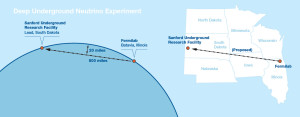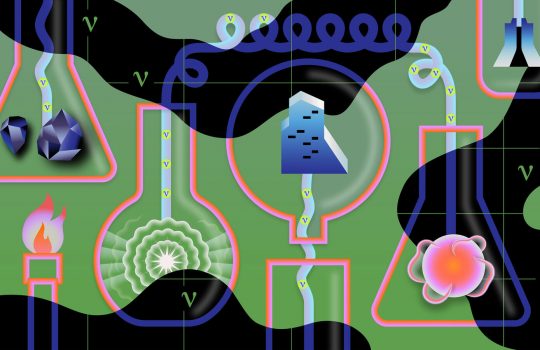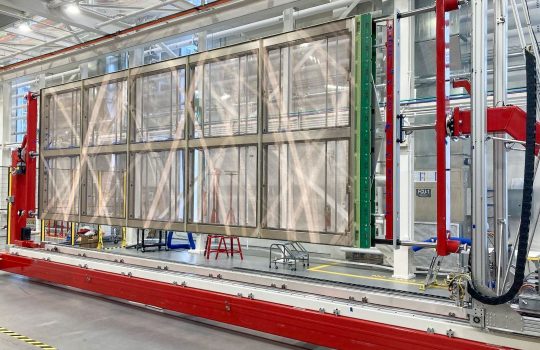Editor’s note: The following news release about the proposed LBNF/DUNE project was issued by the U.S. Department of Energy and is being hosted on the Fermilab website on its behalf.

This graphic illustrates the proposed LBNF/DUNE project, which will include construction at Fermilab in Illinois and at Sanford Lab in South Dakota. Image: Fermilab
A U.S. Department of Energy (DOE) environmental study has determined that building and operating the proposed Long Baseline Neutrino Facility (LBNF) and Deep Underground Neutrino Experiment (DUNE) will not have a significant impact on the environment. LBNF/DUNE would help to advance our understanding of the basic physics of the elementary particles called neutrinos and thereby help us to understand the physical nature of our universe.
DOE is following the National Environmental Policy Act of 1969, which requires that the environmental impacts of any federal project must be studied. DOE explored a number of potential impacts in the draft Environmental Assessment (EA), including impacts on people and the environment, from building and operating the research machine. Impact to floodplains and wetlands were also considered. None were considered major, so a Finding of No Significant Impact (FONSI) was issued. Additionally, a Programmatic Agreement (PA), prepared pursuant to the National Historic Preservation Act would put procedures in place to ensure the protection of historic properties. Copies of the final EA and FONSI are available.
DOE started the environmental study on the LBNF/DUNE project by holding informational meetings for the public in Illinois and South Dakota. A draft EA was then prepared and DOE once again conducted public meetings to hear comments on that document. An existing high-energy particle accelerator at Fermilab in Batavia, Illinois will generate neutrinos, analyze them, and then direct them at a detector to be constructed 800 miles away about a mile below ground at the Sanford Underground Research Facility (SURF) in Lead, South Dakota.
Above-ground and below-ground facilities will be constructed at both locations, although at SURF nearly all construction and operations will be underground. In South Dakota, construction for the project could begin in 2017, if funding becomes available, with construction in Illinois to follow in subsequent years.
People interested in reviewing, downloading or requesting a copy of the final EA, which also includes the public comments, DOE responses, the FONSI, and the PA, should visit this url: http://lbnf.fnal.gov/env-assessment.html
For information on the LBNF/DUNE activities, contact:
Mr. Michael J. Weis, Manager
U.S. Department of Energy, Fermi Site Office
P.O. Box 2000, Batavia, IL 60510
Telephone: 630-840-3281
e-mail: michael.weis@science.doe.gov
For general information concerning DOE’s NEPA process, contact:
Mr. Peter R. Siebach, NEPA Compliance Officer
U.S. Department of Energy (STS)
9800 S. Cass Avenue, Argonne, IL 60439
Telephone: 630-252-2007
e-mail: peter.siebach@science.doe.gov.
DOE support of this project comes from its Office of Science’s Office of High Energy Physics.



